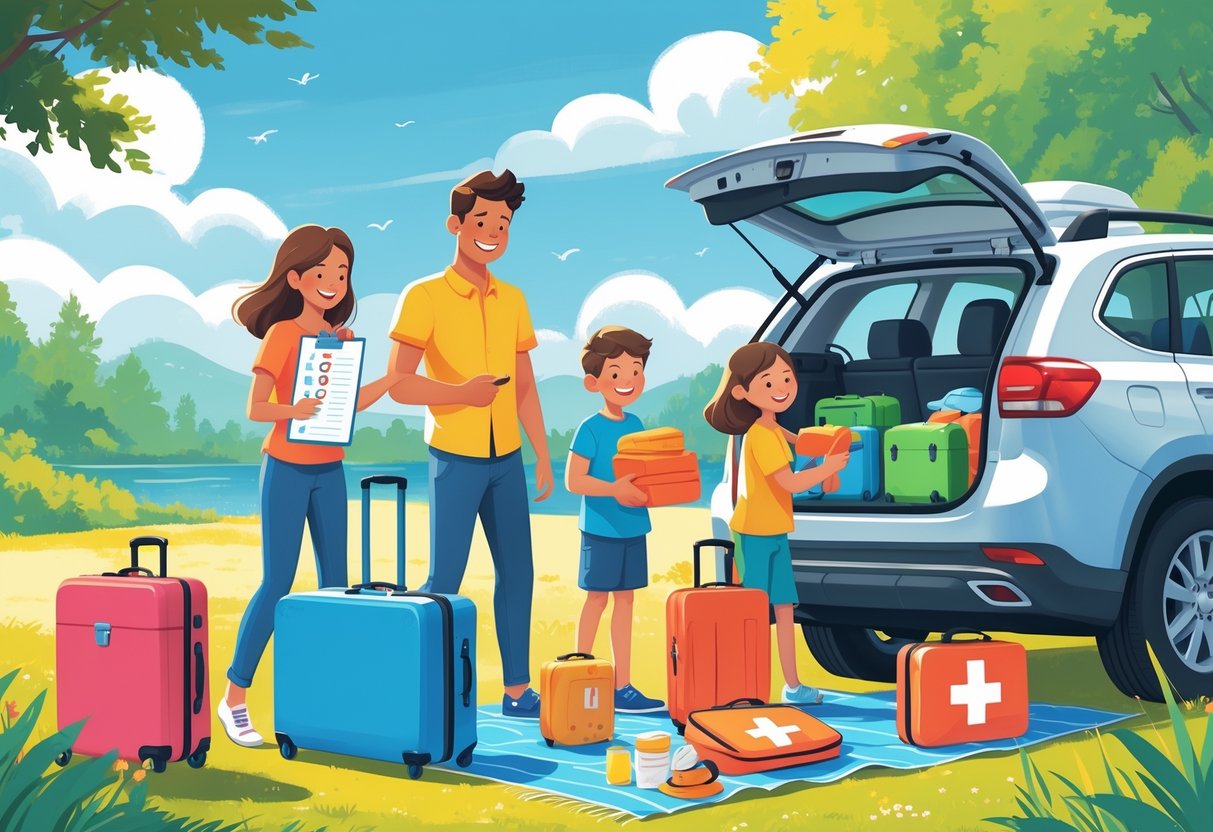
Preparing for Health and Safety

Ensuring every family member is prepared for health and safety needs before and during the trip is crucial. From meeting destination-specific entry requirements to carrying vital travel health supplies, a few proactive steps can make the journey more secure and less stressful.
Vaccinations and Health Requirements
Before traveling, families should research required and recommended vaccinations for each destination. Many countries ask visitors to show proof of routine or region-specific immunizations—such as yellow fever or hepatitis A.
Reviewing official travel health advisories from the CDC or local authorities helps clarify which vaccinations or health screenings are necessary. Travelers should consult their healthcare provider 4–6 weeks ahead of departure to allow time for immunizations to become effective.
If prescription medications or medical certificates are needed, obtaining them well in advance can help avoid airport delays. Keeping physical and digital copies of vaccination records, including COVID-19 cards, is always wise.
Storing these documents in a travel organizer can simplify border crossings and minimize stress during inspection, as recommended in family vacation safety guides.
Traveling with Medical Needs
Families must plan carefully if traveling with someone who has ongoing medical needs. This includes bringing enough medication for the entire trip, plus extra in case of delays.
Packing all medicines in original labeled containers and including a copy of the prescription simplifies airport security and customs checks. A list of each traveler’s allergies, medications, and emergency contacts should be carried both physically and digitally.
Consider bringing a basic travel health kit with essentials like bandages, antiseptic wipes, and pain relievers. Families traveling with medical equipment, such as insulin pumps or EpiPens, should check airline and destination regulations.
Snacks for managing blood sugar and water for hydration are also vital for long flights or days out. For children or adults with medical conditions, research the locations of nearby hospitals and pharmacies at your destination.
Confirm that accommodations can handle any specific requirements, such as refrigeration for medicines or accessibility for wheelchairs. Proactive planning reduces travel health risks and helps handle emergencies swiftly.
Packing Essentials for Families
Family travel success starts with smart packing, keeping essentials top of mind, and planning for the unexpected. A well-organized suitcase and a reliable system for handling important items can help everyone enjoy a hassle-free journey.
Clothing and Gear for All Ages
Select weather-appropriate outfits and bring enough changes for each family member, considering both comfort and potential accidents. Layering pieces, such as light jackets or sweatshirts, add versatility for fluctuating climates.
Pack swimwear, sun hats, and sandals for warm destinations, and include waterproof jackets, gloves, and thermal layers for colder trips. Footwear should always be practical and broken in.
Choose shoes for walking, plus extras like water shoes or flip-flops if necessary. For babies and toddlers, bring plenty of diapers, wipes, and an extra outfit in carry-ons.
Older kids might benefit from bringing a small bag with favorite toys, books, and travel-friendly games to stay occupied during transit. Consider using a checklist to avoid missing anything vital; a comprehensive packing list for all ages helps parents remember key items.
Don’t forget season-specific gear like sunscreen, rain covers for strollers, insect repellent, or cool weather accessories.
Organizing Important Items
Organized packing makes it easier to manage essential travel items. Use labeled packing cubes or pouches to sort clothing by person, day, or activity for quick access.
For toiletries, leak-proof bags prevent spills in luggage. Keep chargers, headphones, and small electronics in a separate compartment or hard case.
Travel documents, IDs, passports, and medical information should be stored together in an easily accessible, waterproof folder. Carry prescriptions and basic first aid supplies with you at all times.
Parents of young children may want to keep a backup of critical documents and emergency contacts in digital form, stored securely on a phone or cloud. It’s advisable to create a simple packing checklist that covers medications, chargers, entertainment, and other important essentials.
Assigning everyone a personal bag for specific items helps older kids stay responsible for their belongings.
Lost Luggage Prevention Tips
Minimizing the risk of lost luggage takes a few targeted steps. Label each suitcase clearly with names, phone numbers, and destination addresses inside and out.
Choose bags in bright or unique colors for easy identification at baggage claim. Attach a copy of your itinerary to each bag in case a piece is misrouted.
Distribute clothing and critical items among all bags so no single piece contains all essentials. Keep valuables, medications, and a change of clothes per person in carry-ons.
For tech-savvy travelers, using digital trackers in checked bags can help recover lost luggage more quickly. Reviewing the airline’s lost baggage policies in advance saves time and stress if things go missing.
File a lost luggage claim promptly and use receipts or photographs of items to support your report. Involving kids by letting them help spot luggage on the carousel adds an extra layer of attention, making lost luggage prevention part of the travel routine.



